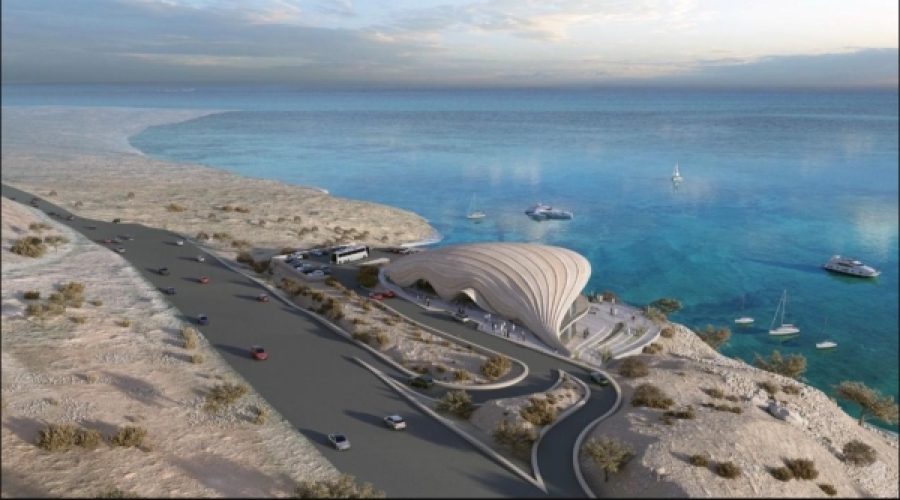Qalhat to Boost Tourism and Economy with New RO3 Million Visitor Center: What This Means for Investors and Local Businesses
Muscat: The Ministry of Heritage and Tourism (MHT) has entered into a financial agreement with the Development Foundation of the Oman LNG Company to support the construction of a visitors’ center at the archaeological city of Qalhat, with a total investment of RO3 million.
The agreement was signed by Salim bin Mohammed al Mahrouqi, Minister of Heritage and Tourism, alongside Dr. Amer bin Nasser Al Matani, CEO of the Oman LNG Development Foundation, who represented the company.
The upcoming Qalhat Archaeological City Visitor Center will span 5,000 square meters and feature two museum exhibition halls designed to showcase archaeological artifacts unearthed from the site. Additional amenities will include administrative offices, a gift shop, a café, an open-air plaza for events, internal pathways connecting the center directly to the archaeological site, seating areas, outdoor canopies, and parking facilities.
Qalhat, one of Oman’s oldest cities and former ports, served as the second capital of the Kingdom of Hormuz. Its strategic position overlooking the Sea of Oman made it a pivotal maritime hub for international trade routes linking India, Yemen, and beyond. Historically, the port was renowned for exporting Arabian horses to India and has been described by various travelers and explorers. Notably, the archaeological site of Qalhat was inscribed on the UNESCO World Heritage List in 2018, underscoring its historic and cultural significance.
UNESCO Synopsis:
The ancient city of Qalhat, located on Oman’s east coast about 20 kilometers north of Sur, is enclosed by inner and outer walls with surrounding necropolises. It flourished as a major port from the 11th to 15th centuries CE under the Hormuz princes.
Qalhat offers unique archaeological evidence of trade connections between Arabia’s east coast, East Africa, India, China, and Southeast Asia. Its position on the Sea of Oman enabled extensive commerce with the Persian Gulf and Indian Ocean regions, facilitating trade between India, East and Southeast Asia, and the Arabian Peninsula. The city prospered through exports of horses, dates, incense, and pearls.
Following Portuguese attacks, Qalhat was abandoned in the 16th century and has remained an archaeological site since. The surviving structures and ruins exemplify the architectural and urban characteristics of the Kingdom of Hormuz’s port city.
The site reflects rich cultural and commercial exchanges within the Hormuz trade network, extending as far as China and Southeast Asia. Archaeological physical evidence highlights Qalhat’s production of dates, Arabian horses, spices, and pearls. The city’s layout and buildings evoke the influence of its diverse inhabitants and traders of various cultural origins. Several prominent structures referenced in historic travel accounts remain intact.
Because it has not been reoccupied since the 16th century, the ancient city maintains its authentic architectural fabric and urban planning, with minimal modern disturbances. Preservation and visitor management strategies prioritize maintaining this authenticity and protecting the site’s Islamic period heritage, especially from the Hormuz Kingdom era.
Careful, minimal archaeological excavation and post-excavation conservation efforts have been commended, with a focus on minimal intervention to preserve the site’s integrity. Qalhat’s setting—nestled between mountains, valleys, and coastline—also contributes significantly to its well-preserved authenticity.
Special Analysis by Omanet | Navigate Oman’s Market
The launch of the Qalhat Archaeological City Visitor Center, backed by a significant RO3 million investment from Oman LNG Development Foundation, signals robust growth potential in Oman’s cultural tourism sector. For businesses, this creates opportunities in hospitality, retail, and event services geared towards heritage tourism, while smart investors should consider leveraging this unique UNESCO World Heritage site’s rising global profile to develop complementary tourism infrastructure. However, maintaining the site’s authenticity and sustainable visitor management will be crucial to preserving its long-term value and avoiding over-commercialization risks.



